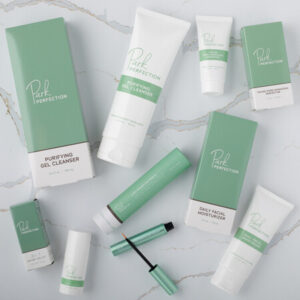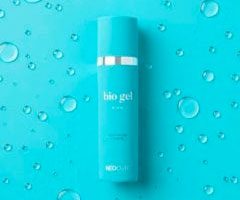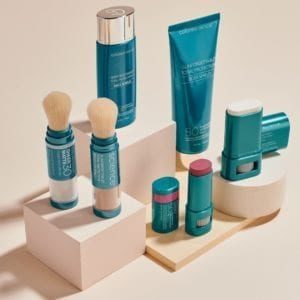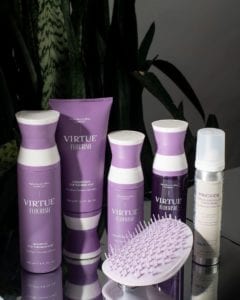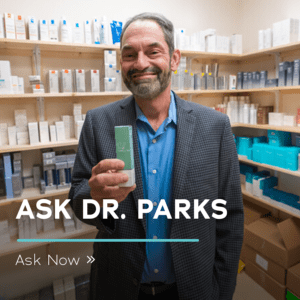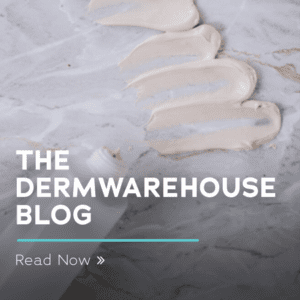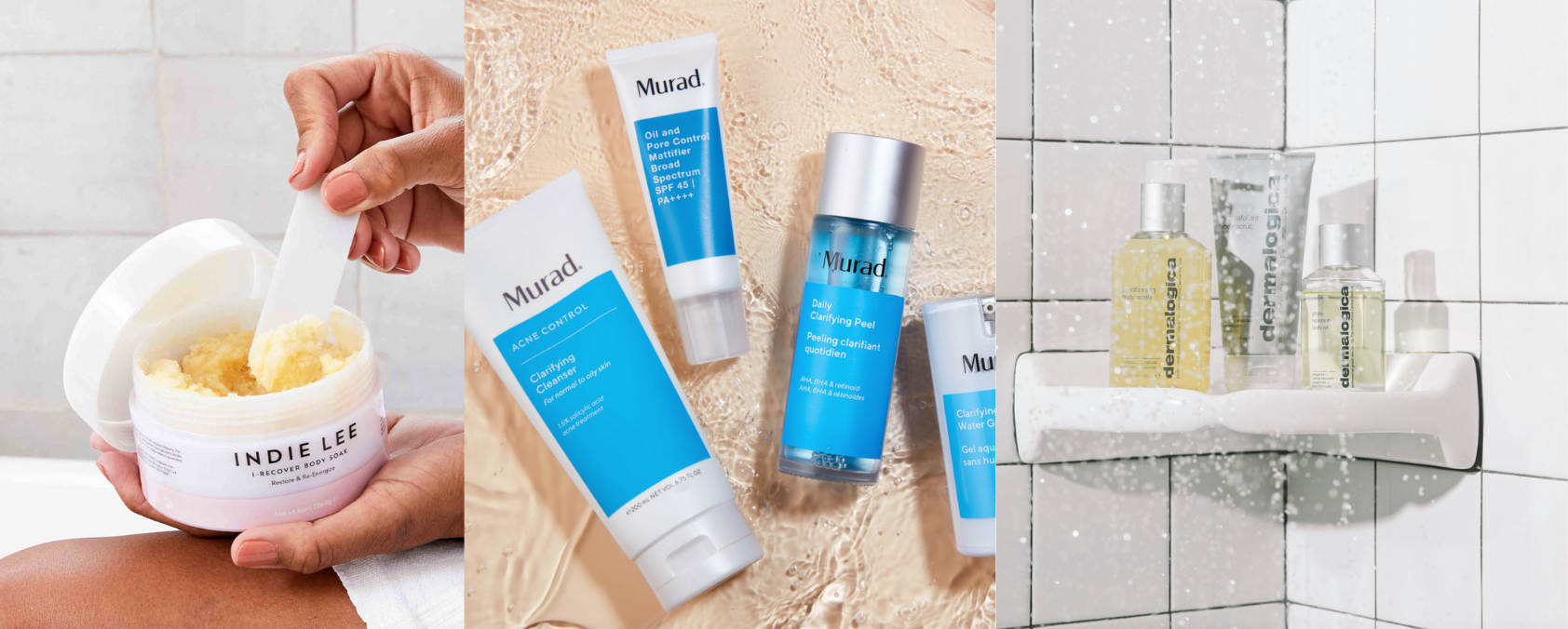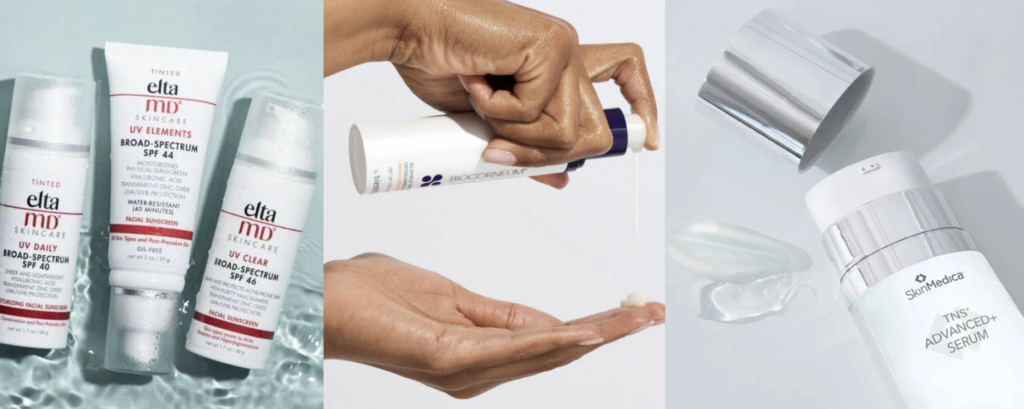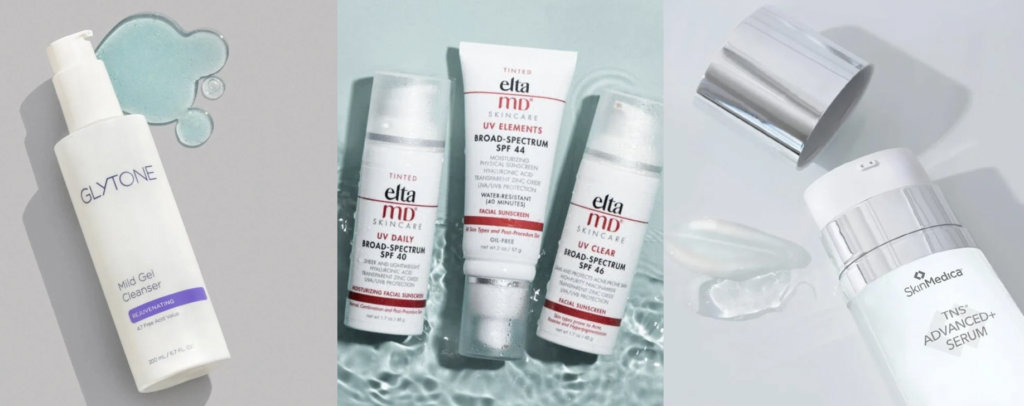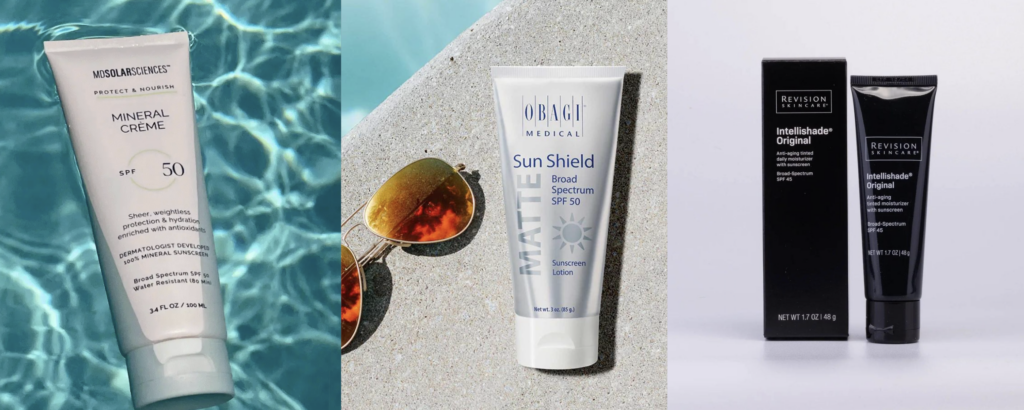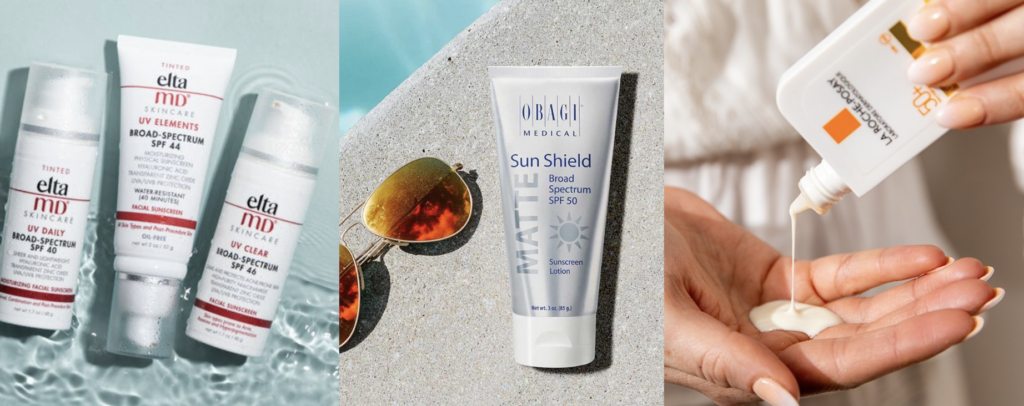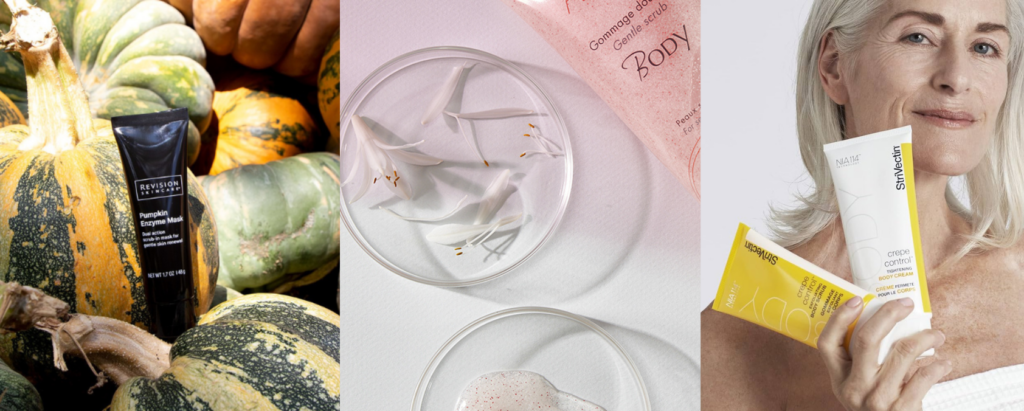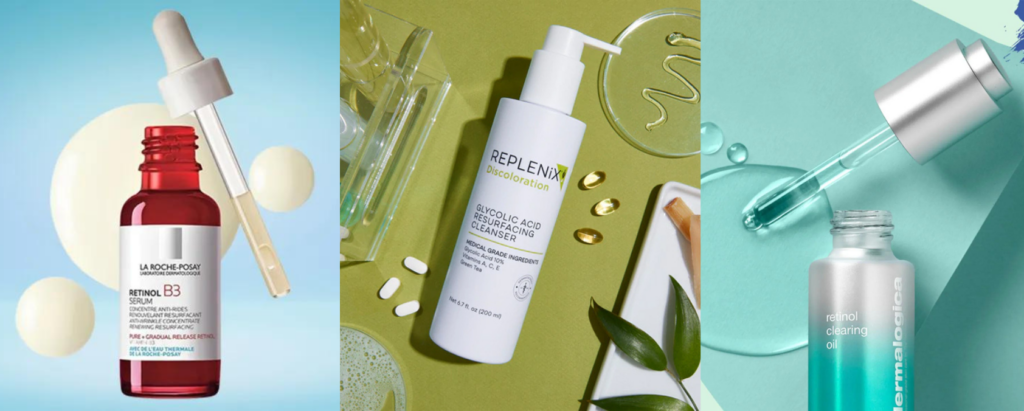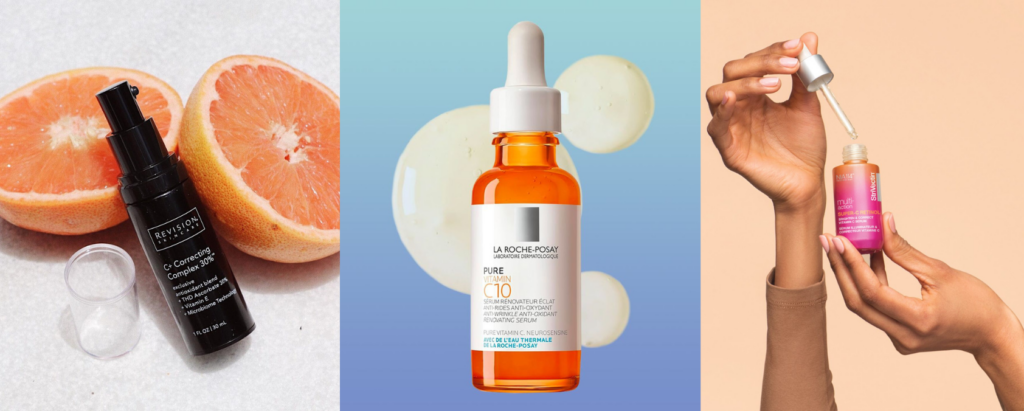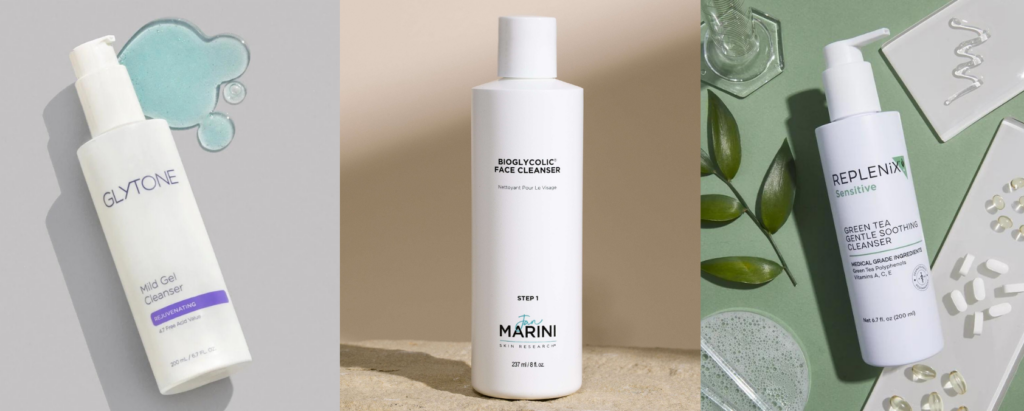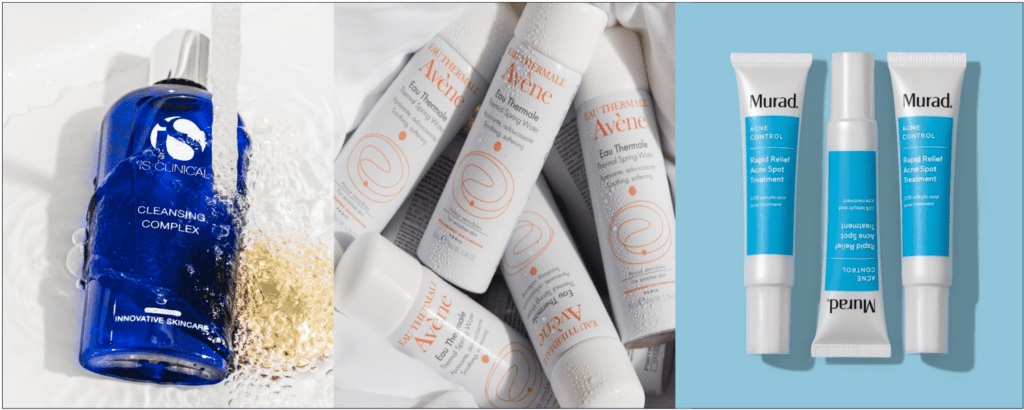While it might be totally normal, back acne (commonly known as ‘bacne’) is often frustrating, painful, and embarrassing. Hearing someone reassure you that acne is normal doesn’t make it any less annoying or embarrassing, so we’ll save you the spiel and get right into teaching you how to treat your back acne once and for all. Here are 15 facts about back acne, or bacne, and how you can treat it.
1. Bacne isn’t always genetic.
In fact, it’s likely caused by something in your environment. “Treating any kind of acne—whether on your face or body—will first require narrowing down on the cause,” says Dr. Parks, the founder of DermWarehouse. “Back acne is often caused by improper hygiene that results in an accumulation of dead skin cells and an overproduction of sebum,” Dr. Parks says. Addressing back acne often means a change in habits, rather than blaming genetics for your breakouts.
2. There are 6 types of back acne.
Back acne isn’t all the same. Different kinds of acne require different treatments and care to heal. There are 6 types of back acne that can each be the result of different factors, or exist together. The 6 types of back acne are:
Whiteheads are small pimples caused by clogged follicles that sit on the surface of the skin. Whiteheads are filled with pus and form a small white bump on the skin and typically aren’t painful. Try not to pop these, even though it can be tempting!
Blackheads are the result of follicles and pores on the skin that become clogged and to be filled with black dirt. Blackheads are caused by a plugged follicle on the surface of the skin that creates a chemical reaction with oxygen and turns black, hence the name “blackheads.”
Papules are small pink bumps on the skin that may feel sensitive or tender. They develop from excess oil and debris clogging the pores. There’s typically no visible head on papules when they erupt, and it may take a few days for the inflammation to go down with these breakouts.
Pustules are slightly larger than whiteheads, and can be described as pimples that are filled with pus and often have red, irritated skin surrounding them. The difference in pustules and whiteheads is the inflammation and pain surrounding the breakout, as whiteheads typically show less redness and inflammation than pustules, although both may appear to have a white pus-filled head.
Nodules are breakouts that are even larger than pustules and sit beneath the skin’s surface. These breakouts may never develop a head and can take longer to heal than other types of acne. They may feel like a large bump or knot below the skin. It’s important to avoid picking at these breakouts, as it can cause further damage and inflammation to the skin.
Cysts are the most painful acne type. Cysts exist deep beneath the skin and can often cause deep scarring within the skin. If you’re experiencing cysts regularly, you may have cystic acne, which can be difficult and painful to heal. Avoid picking at these breakouts at all costs- the scars that result from cysts can be extremely difficult to heal and fade. Cystic acne typically develops from genetics or lifestyle, and it’s recommended you speak with a dermatologist about potential treatments for cystic acne.
3. Bacne can be caused by some medications.
“Some medications have been known to cause acne or acne-like lesions on the face and body, either from changes to hormone levels or as a reaction to a drug,” says Dr. Parks. Medications such as lithium, barbiturates and anticonvulsants are just a few of the medications that have been known to cause acne. If nothing else in your lifestyle is causing your breakouts, it’s likely your medications may be to blame.“I recommend speaking with your physician if you take any medications that are known to cause acne and are experiencing that side effect before stopping your medications,” Dr. Parks says. “Be sure not to stop taking any medications cold-turkey without the advice of a doctor!” [Source: WebMD]

Photo: Murad
4. Back acne can occur if you don’t have acne anywhere else.
“A lot of the time, back acne is caused by environmental factors, so it’s not unlikely that it could occur on your back but not your face,” says Dr. Parks. Acne that occurs only on your back is likely caused by something like poor hygiene, tight clothes or dirty sheets.
5. Back acne can be caused your hygiene habits after exercising.
If you exercise often and don’t wash your body after each exercise, you could begin to develop acne on your back and body. “I recommend washing your body after each workout, and washing exercise clothes after each use,” says Dr. Parks. [Source: American Academy of Dermatology Association] We recommend treating body acne with the Clinician’s Complex for men Foaming Gel Face & Body Cleanser.
6. Back acne can be caused by poor hygiene.
Even if you don’t exercise often, not washing your body enough can cause dirt and bacteria to build up, along with an excess of sebum and dead skin cells. These impurities can clog your pores and lead to breakouts on your back, chest, or shoulders. Wash your body regularly and use exfoliating products and materials such as a dry brush to exfoliate dead skin cells or products like the Murad Acne Body Wash or Glytone Acne Treatment Spray. Both of these products contain salicylic acid which will gently exfoliate while treating the bacteria and germs that can contribute to acne breakouts. Even if you’re not washing your hair, or didn’t find yourself sweating profusely during the day, it’s important to take regular showers or baths to keep your skin clean and acne-free.
7. Bacne can be caused by tight clothes.
If you’re suffering from a bacne breakout, your clothes may be to blame. If you often find yourself wearing tight shirts, sports bras, or other garments, you may be contributing to bacne. When combined with sebum and dead skin, friction from tight clothes can cause irritation on the skin and lead to clogged pores and breakouts. Try washing your clothes more often, or switching to loose-fitting clothes when you can to give your skin a chance to breathe.
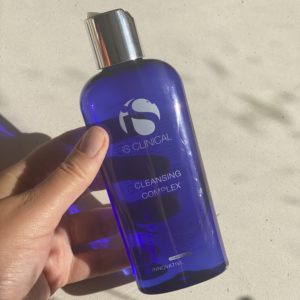
Photo: iS Clinical
8. Back acne has different treatment plans than acne on the face.
Because bacne is often caused by external factors like hygiene and exercise, treating it often means making small changes to your habits rather than addressing the genetic causes of your acne. If your bacne is caused by your environment, try making small changes like exfoliating and washing your body more, washing your sheets more, avoiding tight clothes as much as possible, and showering after every workout.
9. The sun can make bacne worse.
You’ll often find mixed advice on whether getting more sun will worsen or help acne breakouts. The reality is that the sun is simply damaging for your skin, even if your skin looks clearer at first. “While getting some sun might make your skin appear clearer at first, UV exposure can irritate existing acne and make breakouts appear redder and more prevalent,” Dr. Parks says. “UV exposure can also dry your skin out, leading to more sebum production and an increase of breakouts whether you have dry or oily skin,” says Dr. Parks. In the long term, prolonged sun exposure can make the skin more susceptible to irritation and damage. There is also a specific type of an acne-like skin irritation called Mallorca acne that can be triggered by overexposure to sunlight. [Source: Healthline]
Dr. Parks recommends using an SPF like the Elta MD UV Sport on your body to combat any irritation to existing breakouts that might be caused by UV exposure, and to regularly moisturize and exfoliate if you are exposed to the sun for long periods of time. The Dermalogica Breakout Clearing Foaming Wash can help with existing bacne breakouts.
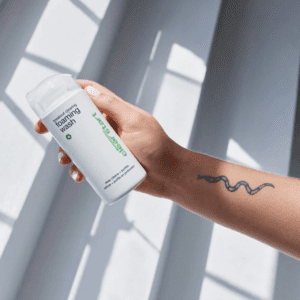
Photo: Dermalogica
10. Back acne is a great reason to see a dermatologist.
While bacne may often be caused by factors of your environment , a dermatologist can help you narrow down on the causes of your acne and find a great treatment for it. Severe and stubborn acne may require a prescription to help from the inside out.
11. Back acne can be caused by dirty sheets.
Do you wash your sheets enough? Dirty sheets can develop and spread bacteria that can cause breakouts all over your body. As you sweat and produce oil in your sleep, that oil gets absorbed into your sheets and rubs against your body. Dead skin cells also build up on your sheets, and this combination of dead skin, sweat, and dirt can do a number on your pores. We recommend washing your sheets weekly, or more if you tend to sweat more, to prevent breakouts, and using an antibacterial laundry detergent that will kill any germs and bacteria that form in the fabric.
Those with sensitive or allergy-prone skin may find that they develop breakout-like rashes on their body after using certain detergents. We recommend speaking with a dermatologist to find out which detergents would be best for you if you are sensitive to things like fragrance and cleaning agents.
12. Bacne can be addressed with regular exfoliation.
“Exfoliating regularly can help address and prevent breakouts on the chest and back by sloughing off dead skin cells which will prevent pores from clogging,” says Dr. Parks. “You can use a physical exfoliant on your body because the skin there is less delicate, where I wouldn’t recommend a physical exfoliant for the face,” Dr. Parks says. Products like the Indie Lee Coconut Citrus Body Scrub, the Dermalogica Thermofoliant Body Scrub, or the Fur Silk Scrub are great options. These are physical exfoliants that will slough off dead skin cells and clear the skin of any dirt, oil or bacteria that may be building up.
A chemical exfoliant will also get the job done, and can be a better option for anyone that doesn’t like to use physical exfoliants. We recommend the Glytone Mild Gel Cleanser, the iS Clinical Cleansing Complex, and the SkinMedica AHA/BHA Exfoliating Cleanser.
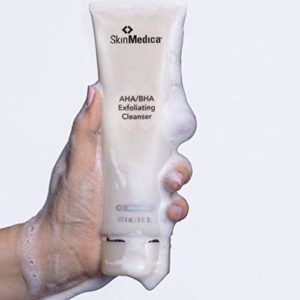
Photo: SkinMedica
13. Between 40 and 50 million people experience acne in the United States.
Acne is extremely common among both teens and adults, though the causes of acne in teens is different from adults. “Often we associate acne with the teenage years because teenagers are prone to acne caused by the hormonal changes associated with puberty and a sudden need to pay closer attention to one’s personal hygiene,” says Dr. Parks. “In adults, the causes of acne can be a result of a wider variety of influences—from diet, hygiene and lifestyle to medications, genetics and hormonal imbalances. Finding a treatment for adult acne often requires a better understanding of a person’s medical history and lifestyle, so it can be a bit more challenging,” Dr. Parks says. [Source: American Academy of Dermatology Association]
14. Acne can be caused by your diet.
We’ve all experienced a breakout or two from rapid changes in our diet—maybe you had a long weekend and ate pizza a few nights in a row, or ate a lot of sugar around the holidays. There are certain foods that have been known to trigger breakouts, though bacne is more often caused by lifestyle and hygiene. If you’ve eliminated all of the other bacne causes and still suffer from regular bacne breakouts, try eliminating things like refined sugars, dairy, fast food, excess Omega-6 fats and even chocolate from your diet with help from your doctor. [Source: Healthline]
15. Acne won’t clear up instantly.
Just because a breakout appears overnight does not mean it will go away that quickly. A lot of skincare and beauty marketing has convinced us that you should be able to get rid of a pimple in a matter of hours by using certain products—so when that doesn’t happen we’re often left frustrated, embarrassed and disappointed. The truth is that it’s highly unlikely that you’re going to make your acne disappear in a matter of days, weeks, or even months. Addressing acne, even bacne, might require months of consistent effort before you see a major difference.
All of this is to say, don’t get frustrated if you feel that your efforts to clear your bacne are not working. Take a look at the bigger picture and set long term skin goals for yourself.

